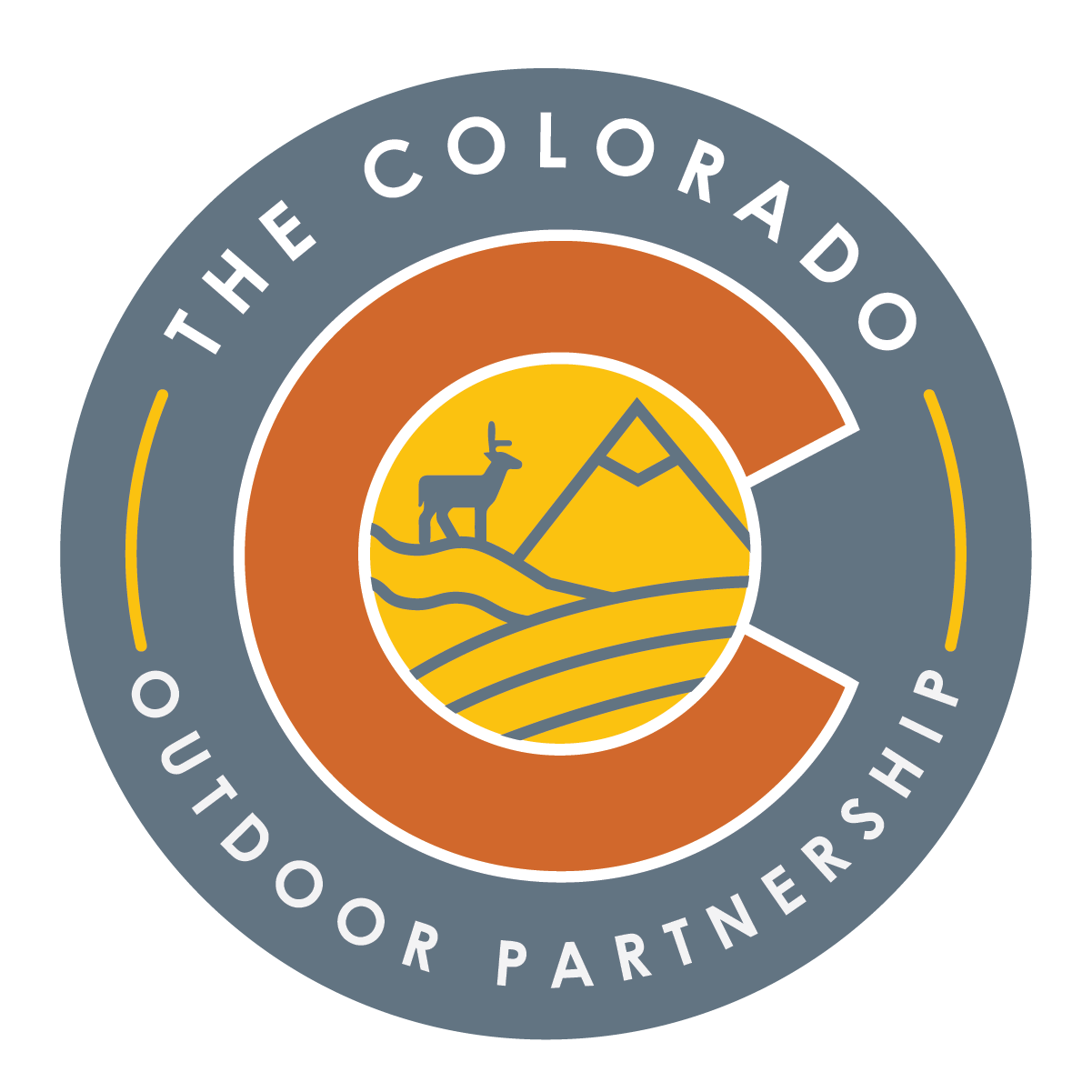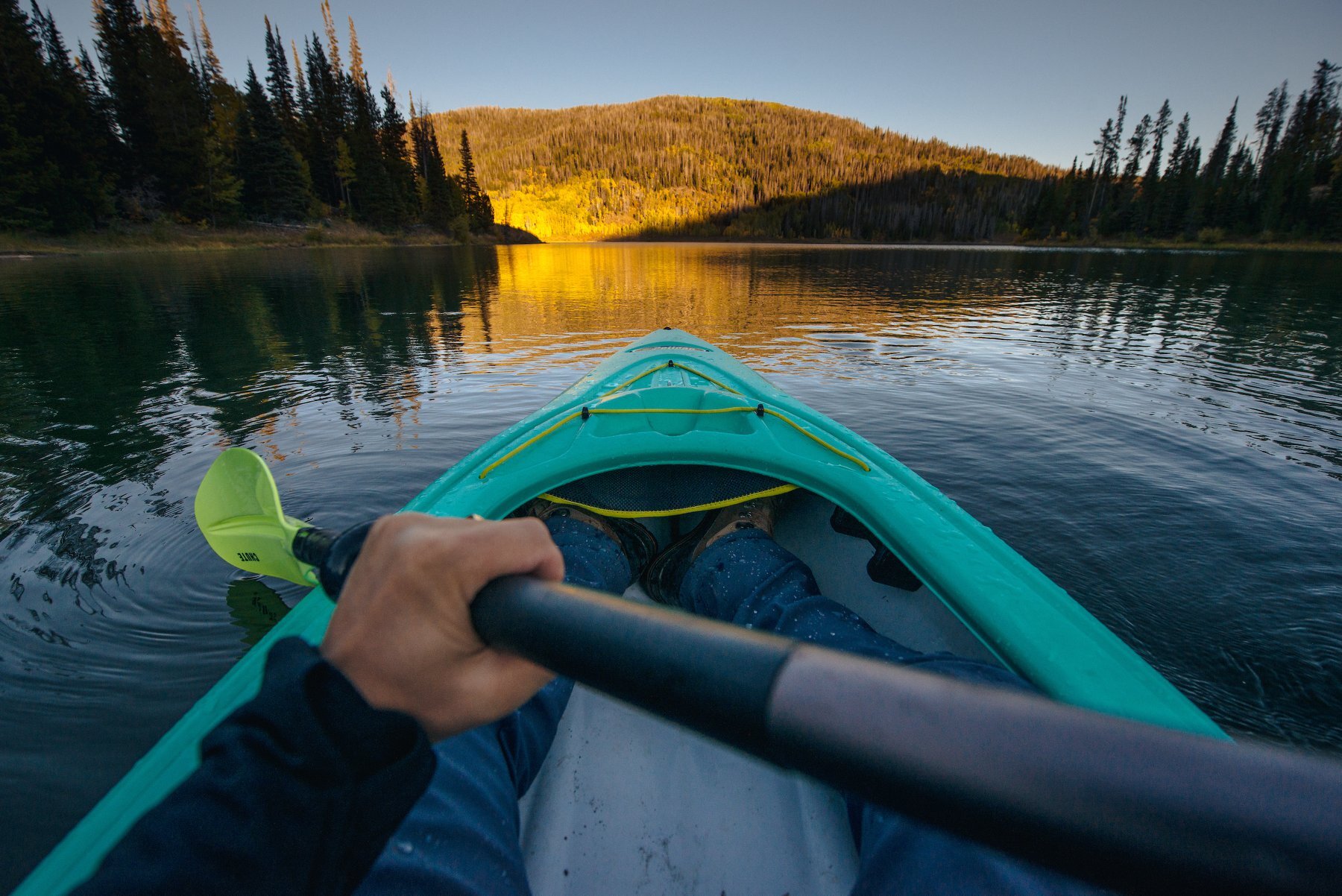Colorado Outdoor Regional Partnerships Tools & Resources Guide
The Colorado Outdoor Partnership, in collaboration with the Inter-Agency Conservation and Recreation Council, has created a Resource Guide to support Regional Partnerships that includes best practices related to coalition guidance, planning documents, data and mapping resources as well as additional funding opportunities.
Coalition Guidance
Guidelines: Outdoor Regional Partnerships meet the following guidelines:
Broad representation of outdoor related interests that include the following sectors: outdoor recreation users, agriculture/private lands, economic development, wildlife conservation and land conservancies, under-represented populations, hunting/fishing, local government, CPW and other land management agencies.
Partnerships operate or work towards operation under a guidance document or charter and mission statement.
Partnerships consider opportunities to work with neighboring jurisdictions (counties, cities, reservations, etc.) and across land ownership boundaries to plan for wildlife and natural resource conservation and the growing demand for outdoor recreation access.
Partnerships adopt the Colorado Outdoor Principles to show their commitment to collaboration to ensure the state will remain a beautiful and healthy place to live, work, and play for generations to come.
Partnerships advance conservation and recreation planning at a regional or landscape scale which informs the development of a Statewide framework and Plan and measurably contributes to the state-level vision.
Partnerships participate in the Colorado Outdoor Partnership (CO-OP) and send at least one representative to the annual Partners in the Outdoors Conference.
Example charters
Chaffee County Recreation in Balance Partnership:
Lessons Learned document
Partners in the Outdoors Webinar: Envision Recreation in Balance: Practical advice for collaborative planning and transformative action
County Governments And The USDA Forest Service: A Guidebook For Working Together
Community Toolkit - This website was developed by the University of Kansas to support community health initiative but contains sections on creating and maintaining coalitions and partnerships, assessing community need, developing strategic plans and more.
National Forest Foundation Conservation and Collaboration Tools Search: This searchable database includes hundreds of resource documents, tools, webinars, and other resources to support collaborative groups and nonprofit organizations
Collaboration and Conflict Resolution Resources: Conservation-related links and resources compiled by the Center for Natural Resources and Environmental Policy, including best practices for designing a collaborative process, managing effective meetings, and hiring a facilitator.
DEI and Community Engagement Resources:
Guide is from CDPHE’s Office of Health Equity - Authentic Community Engagement to Advance Equity
State of Colorado Community Partnership Principles Guide
NoCo PLACES 2050 - From late spring 2020 to summer 2021, NoCoPLACES 2050 conducted in-depth research into a series of Core Topic issues that affect every future management decision the public land agencies may develop to handle increased traffic and outdoor recreation demand.
Planning Documents
State-level vision, goals and objectives
In 2050, Colorado’s people and economy thrive because of our healthy lands, water, wildlife, and working farms and ranches, accompanied by improved, inclusive outdoor recreation, hunting, and angling opportunities for all. The Colorado Outdoor Partnership works towards this vision using Colorado’s Outdoor Principles and acknowledges that outdoor recreation and conservation should reflect, respect and value the demographic and cultural diversity of our state.
Goals and Objectives (Coming soon)
Statewide Conservation and Recreation Plan Key Elements and Planning Template. Below outlines plan elements and a template for a conservation and recreation plan with the intent of capturing local and regional values, needs and priorities under a shared strategy. By following these planning elements, we can create consistency statewide while supporting planning at a more local level.
Vision: identify the vision for an established area or region. How does this vision support the State-level Vision? Does it complement Colorado’s Outdoor Principles? Does the vision reflect the desired future condition for a defined area?
Goals & Measurable Objectives: What are the desired outcomes or goals of this collaborative effort and how will they help achieve the regional and state-level visions? How will you measure success or progress in reaching these goals and what is the timeline?
Conservation Goals & Needs: What are the conservation specific goals? What is the current situation or existing condition with private and public lands? What are the trends, threats and opportunities to achieve desired future conditions? How do these needs address equity, diversity, and inclusion? Have you captured community voices in identifying these goals?
Outdoor Recreation Goals & Needs: What are the outdoor recreation specific goals? What is the current situation or existing condition of outdoor recreation opportunities and infrastructure? What are the trends, threats and opportunities to achieve desired future conditions? How do these needs address equity, diversity, and inclusion? Have you captured community voices in identifying these goals?
Priority Actions & Projects: What are the strategies for advancing and balancing conservation and outdoor recreation goals? Can you identify geographic locations for conservation and recreation projects? When considering the challenges and opportunities, what are the top priority actions and projects?
Implementation & Monitoring: What are the strategies for advancing priority actions and projects? What are the funding needs to support this work? How will you measure and monitor progress over time? What methods will you use to gain community support for the local/regional planning elements?
2019-2023 Colorado Statewide Comprehensive Outdoor Recreation Plan (SCORP). CPW will release a new plan in 2024 that captures the outcomes and progress of the Regional Partnerships Initiative. The 2019 offers a reference for work happening now, including priorities and strategies, public participation and preferences, economic contributions and top issues for Colorado land managers.
State Wildlife Action Plan (SWAP) - CPW plan that outlines which species and habitats are the most vulnerable to inform conservation actions.
Planning Trails with Wildlife in Mind - Created by a Task Force made up of local, state, and federal land managers from across the state, the 2021 version of Planning Trails with Wildlife in Mind updates the best practices and science for Colorado’s land managers, trail advocates, and conservationists engaged in trail planning.
Colorado Water Plan -First created in 2015, the Colorado Water Conservation Board is in the process of updating this plan which will be finalized by 2022. The plan includes goals for sustainable cities, viable and productive agriculture, a strong and healthy environment, and robust recreation and tourism industries.
Data and Mapping Resources
Chaffee County Tools and Resources
Wildlife Decision Support Tool - an example of using science-based data to support community strategies.
Community Research and Resources - this web page provides a variety of examples that Envision Chaffee County has used in its coalition work including recreation and agriculture surveys as well as their Recreation Report Card.
Colorado Parks and Wildlife:
Colorado’s Conservation Data Explorer (CODEX) -a web-based interactive map viewer to support conservation planning and more. In development, project release is summer 2021
Colorado Trail Explorer (COTREX)- Colorado’s network of trails, trail information, and user participation
Regional Partnerships should be working closely with CPW field staff starting with our Area Wildlife Managers. A map of CPW areas and staff contact information can be found here.
United States Forest Service: Sustaining Wildlife With Recreation on Public Lands: A Synthesis of Research Findings, Management Practices, and Research Needs
The Nature Conservancy Resilient Land Mapping Tool
10-minute Walk Tools and other Trust for Public Land planning resources
Colorado Department of Public Health and Environment (CDPHE) Geospatial Data and Resource Library
Colorado Department of Transportation (CDOT) Wildlife Data
Colorado Water Conservation Board technical tools
Funding Resources
The Colorado State Forest Service developed the Natural Resources Grants & Assistance Database to help communities, educators, government agencies, landowners, nonprofit organizations and others to more easily search for natural resource project funding and assistance programs that promote the health and welfare of Colorado’s natural resources.
Great Outdoors Colorado (GOCO) Grant Applicant Resources
Colorado Parks and Wildlife Recreational Trails Program, Colorado Wildlife Habitat Program and other CPW Grant Programs
Coming Soon! Outdoor Equity Grant Program
Colorado Department of Local Affairs (DOLA) Financial Assistance Programs for local governments. (*eg. Conservation Trust Fund, Energy Impact Assistance Fund)
Colorado Resiliency Office & Framework
Colorado Main Street Program -*Can provide technical assistance and mini grants to Local Governments on trail connections to central business districts
2021-2023 Funding for planning and implementation of modernized land use practices
Colorado Department of Transportation (CDOT)
Revitalizing Main Streets - Funding available to help communities implement transportation-related projects that improve safety and yield long-term benefits to community main streets.
Western Slope Wildlife Prioritization Study and other Wildlife related resources
Colorado Office of Economic Development & International Trade (OEDIT)
Colorado Department of Public Health and Environment (CDPHE)
Supplemental Environmental Projects (SEPs) are projects that benefit the environment or public health, funded through environmental enforcement actions.
Federal Fund Braiding for Local Match - this resource may be helpful for coalitions as they look at braiding funds between recreation and transit/ mobility.
Colorado Department of Agriculture (CDA) -
State Conservation Board - Matching Grant Program provides matching state funds to Colorado Conservation Districts to help implement private lands on-the-ground conservation projects and educational conservation activities.
Colorado Noxious Weed Management Fund - Organized private interests, conservation districts, municipalities, and counties are eligible to apply for assistance provided that awarded funds are used to enhance weed management efforts within the State of Colorado.
Colorado Department of Local Affairs (DOLA) - The DOLA Division of Local Government and Colorado Resiliency Office have developed the following draft master spreadsheet to provide local governments with a one-stop source for information about federal, state and local funding opportunities for COVID recovery/stimulus. This will be updated as funding sources change.
Contacts
Colorado Parks and Wildlife:
Jody Kennedy
Regional Partnership Program Manager
jody.kennedy@state.co.us | cpw.state.co.us




